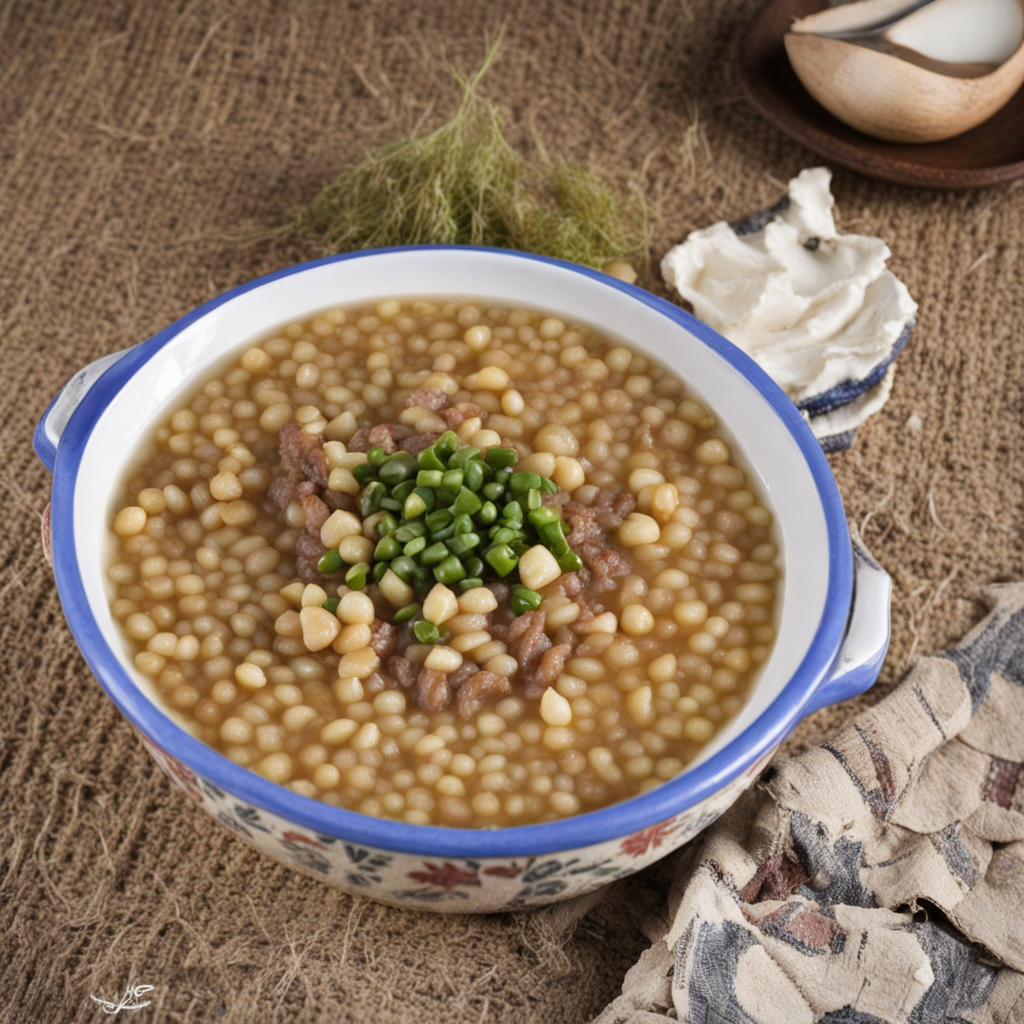Ting
Ting is a traditional dish from Lesotho, known for its unique texture and comforting flavors. It is made from fermented maize meal, which is cooked to create a smooth, thick porridge. This dish is often enjoyed as a staple food, offering a satisfying base that pairs well with a variety of accompaniments. The fermentation process gives Ting a subtle tanginess, enhancing its taste and making it a delightful experience for those unfamiliar with its flavor profile. In Lesotho, Ting is typically served with a range of toppings, such as savory stews, rich sauces, or even sweet toppings like honey or fruit. This versatility allows for endless combinations, making each meal a personalized culinary adventure. The rich, hearty nature of the dish makes it especially popular during colder months, providing warmth and nourishment to those who partake in it. Exploring Ting is not just about the taste; it’s also a journey into the cultural heritage of Lesotho. The dish is often shared among family and friends, symbolizing togetherness and community. This aspect of Ting adds a layer of richness to the experience, inviting food lovers to savor not only the flavors but also the stories and traditions that have been passed down through generations.
How It Became This Dish
Origin of Ting Ting, a traditional food from Lesotho, has deep roots in the country's agricultural practices and cultural heritage. The dish primarily consists of fermented maize meal, which is a staple in the Basotho diet. The origin of Ting can be traced back to the indigenous practices of the Basotho people, who have cultivated maize for centuries. This grain became a fundamental part of their diet, especially after its introduction to Southern Africa from the Americas in the 16th century. The process of making Ting begins with the selection of high-quality maize, which is ground into a fine meal. The meal is then mixed with water to create a dough-like consistency. Once prepared, the mixture is allowed to ferment naturally, a process that can take anywhere from one to three days depending on the local climate and desired sourness. This fermentation not only enhances the flavor but also makes the nutrients in maize more bioavailable, which is critical in a region where food security can be precarious. \n\n Cultural Significance Ting holds a special place in the culinary traditions of Lesotho, serving as more than just a food item; it is a symbol of community and identity. Traditionally, it is served during significant cultural events, including weddings, funerals, and communal gatherings, reinforcing social bonds among the Basotho. The preparation and sharing of Ting often involve the collective efforts of families and communities, where the act of cooking becomes a communal activity that fosters unity and cooperation. In Basotho culture, food is often intertwined with spiritual beliefs. Ting is sometimes seen as a conduit for blessings and is offered during rituals and ceremonies to honor ancestors. Its sour flavor is not just a taste preference but signifies the rich agricultural history and resilience of the Basotho people who have adapted their food practices to the harsh mountainous environment of Lesotho. \n\n Development Over Time Over the years, the preparation and consumption of Ting have evolved. While the traditional method remains popular, modern influences have led to variations in the dish. Urbanization and globalization have introduced new ingredients and cooking techniques, allowing for creativity while still respecting the essence of the dish. In urban centers, Ting might be served with a variety of accompaniments, such as meats, vegetables, or sauces that blend traditional Basotho flavors with contemporary culinary practices. Additionally, the nutritional understanding of fermented foods has gained recognition in recent years. The health benefits associated with fermented maize have prompted a resurgence of interest in Ting, as more people seek out traditional foods that contribute to gut health and overall well-being. This revival is also evident in the growing popularity of food tourism in Lesotho, where visitors are eager to experience authentic Basotho cuisine, including Ting, as part of their cultural exploration. \n\n Contemporary Challenges Despite its rich history and cultural significance, the production and consumption of Ting face contemporary challenges. Climate change poses a significant threat to maize cultivation, impacting the availability and quality of this staple crop. Changes in weather patterns and increased incidence of droughts can affect the fermentation process and, consequently, the final product. Moreover, as urban lifestyles become more prevalent, younger generations may be less inclined to engage in traditional food preparation methods, opting for convenience foods instead. This shift not only threatens the traditional knowledge surrounding Ting but also risks the loss of community practices that have been passed down through generations. Efforts are being made within communities to encourage the younger population to embrace their culinary heritage, which includes workshops and cooking classes focusing on traditional dishes like Ting. \n\n Conclusion The history of Ting from Lesotho is a testament to the resilience and adaptability of the Basotho people. From its origins as a simple fermented maize dish to its current status as a cultural emblem, Ting encapsulates the essence of Basotho identity and community. As it evolves in the face of modern challenges, the continued appreciation and celebration of Ting serve as a reminder of the importance of preserving culinary traditions and the stories they tell. As Lesotho navigates the complexities of the modern world, Ting remains a vital part of its cultural landscape, bridging past and present in every delicious bite.
You may like
Discover local flavors from Lesotho







